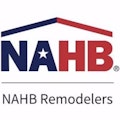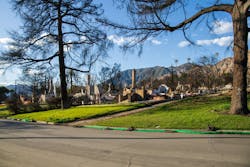NAHB Wants More Resilient Homes, Lower Insurance Costs
Natural disasters such as hurricanes, tornadoes, floods, and wildfires are increasing in frequency and severity. At the same time, state insurance regulators have struggled to address the challenges associated with inadequate insurance coverage and excessive premiums for single-family and multifamily dwellings. The result is a nearly 20% spike in home insurance costs across the country during the past two years.
In response to this growing problem, the National Association of Home Builders is supporting state programs that help to reduce homeowner insurance premiums for structures built or renovated to modern codes or that meet the higher standards of a home resiliency program.
Studies demonstrate that homes built to codes developed after the year 2000 are significantly more resilient to natural disasters than homes built to earlier codes. Home resiliency programs go a step further, encouraging remodelers and homeowners to voluntarily build or upgrade to above-code standards.
Examples of above-code programs include the National Green Building Standard (NGBS) Green +RESILIENCE Certification and the Insurance Institute for Business & Homes Safety (IBHS) FORTIFIED program.
Several states have also developed above-code programs to incentivize voluntary resilience retrofits. The My Safe Florida Home program, for example, offers homeowners matching grants up to $10,000 for roof retrofits and other damage mitigation efforts. Likewise, the Maine Home Resiliency Grant Program aims to help homeowners strengthen roofs or floodproof basements to protect against severe weather damage and to reduce insurance losses. The U.S. Department of Housing and Urban Development developed a series of resilience guides to help builders, remodelers, and homeowners get started.
NGBS Green +RESILIENCE Certification
Remodelers looking to make homes more resilient against damage from natural disasters can seek National Green Building Standard (NGBS) Green +RESILIENCE Certification. The certification is recognized by HUD’s Green Resilient Retrofit Program that provides funding for direct loans and grants for projects that promote green building practices.
The NGBS is an ANSI-approved, third-party certified standard for residential green building and remodeling. It was created in collaboration with the NAHB; the International Code Council; and a consensus committee of builders, architects, engineers, code officials, and other stakeholders.
The NGBS Resilient Construction Sections were intentionally written to provide a design-based performance metric as opposed to a prescriptive checklist of best practices. The resilient construction practices allow resilience to be customized for a specific project, as well as weather conditions and natural hazards in the local area. To earn the +RESILIENCE certification, a home must provide “at least 30% enhanced resilience and durability beyond the structural requirements of the IBC or IRC.”
IBHS’ FORTIFIED program
The IBHS FORTIFIED program is another popular above-code option. IBHS is an independent, nonprofit organization funded by property insurers and reinsurers that provides resources and guidance for remodelers and homeowners seeking to fortifying homes to withstand extreme weather events. The IBHS Research Center conducts realistic weather simulations to evaluate the structural design of their FORTIFIED roofing and building standards. The program is designed to strengthen homes and commercial buildings against specific types of severe weather (high winds, hurricanes, tornadoes) by requiring stronger roof decks and edges, impact-resistant shingles, and wind- and rain-resistant attic vents.
In some states, homes with FORTIFIED roofs and those certified to the FORTIFIED Silver or Gold standard may qualify for a discount on homeowner insurance.
Improving the resiliency of the existing housing stock is an important undertaking for which the nation’s remodelers play a pivotal role. Educating consumers on the value of resilience and helping them make better choices, incorporating cost-effective adaptation and mitigation techniques into routing home improvement projects, and considering third-party certification to above-code programs such as the NGBS + Resilience or FORTIFIED can help increase home values, reduce insurance costs, and stabilize the housing supply.
About the Author

NAHB Remodelers Council
The National Association of Home Builders Remodelers Council comprises nearly 50,000 NAHB members who are involved in the remodeling industry. NAHB is a Washington, D.C.-based trade association with more than 140,000 members involved in home building, remodeling, multifamily construction, and other aspects of residential construction.
